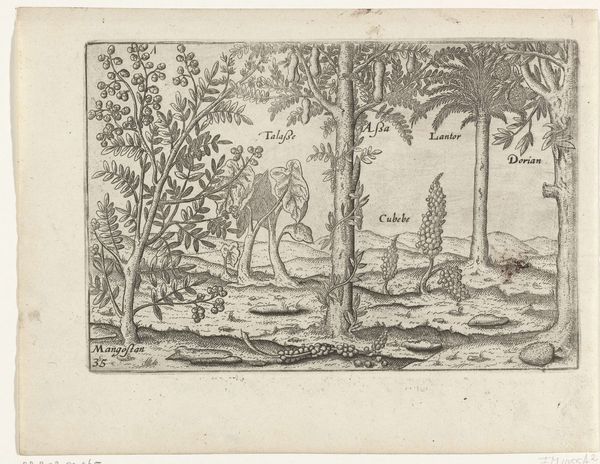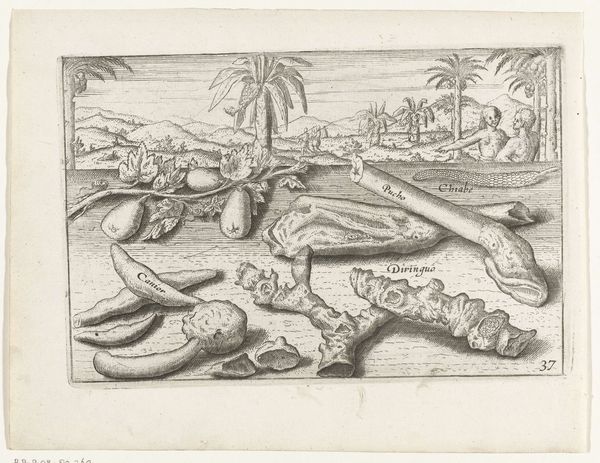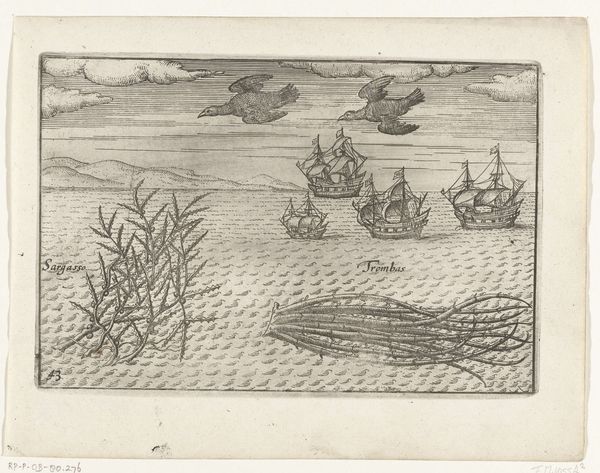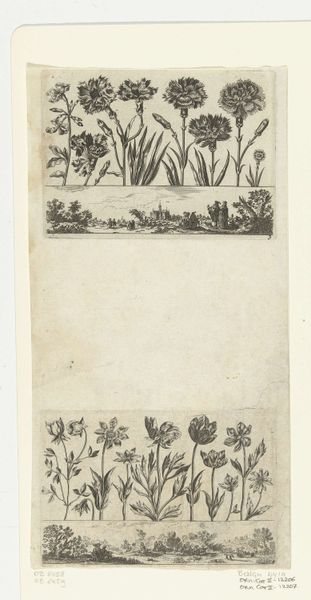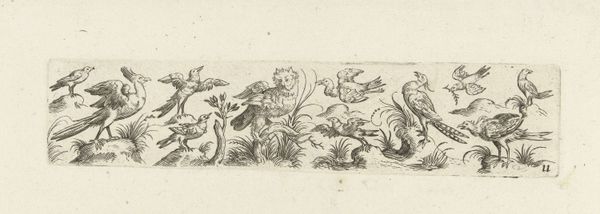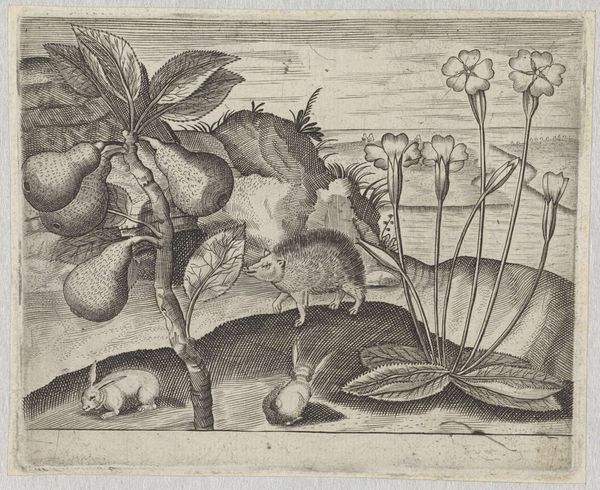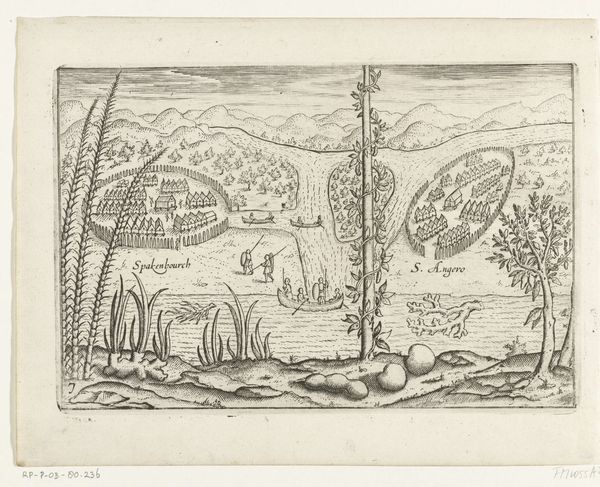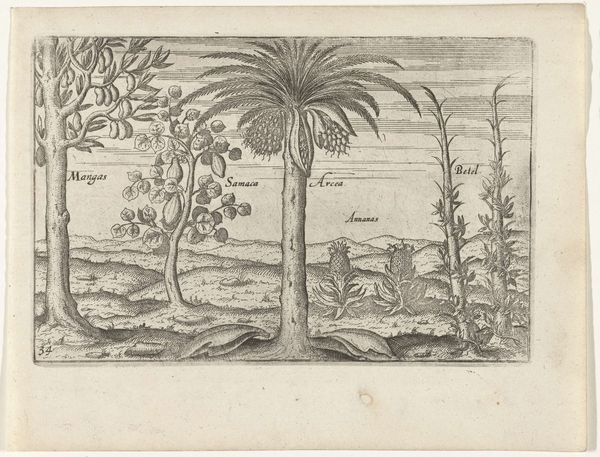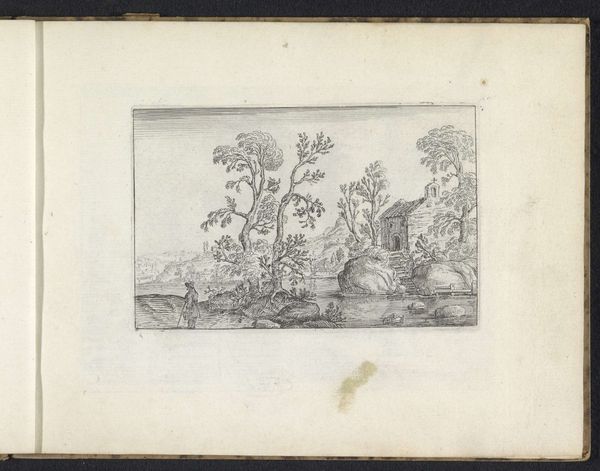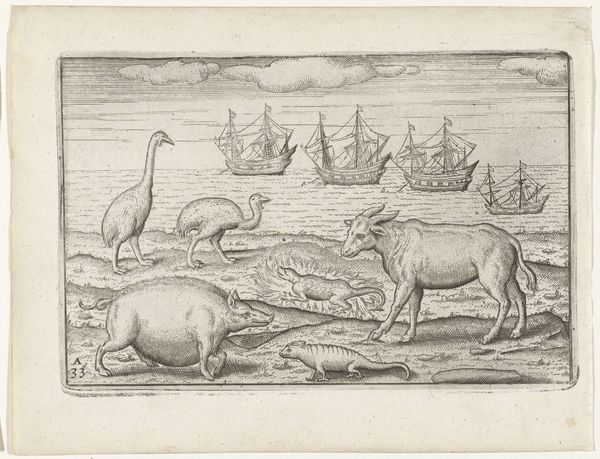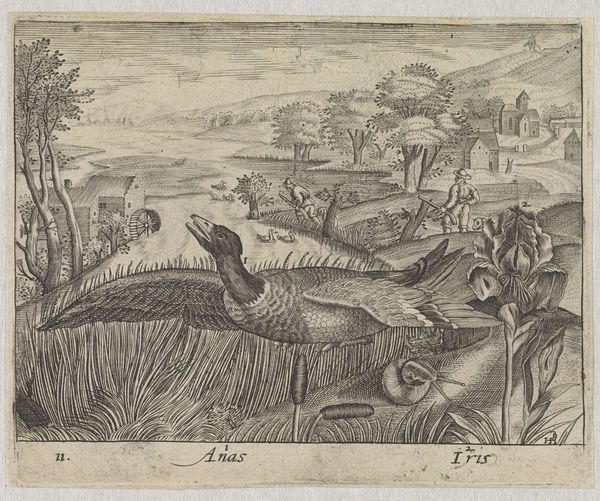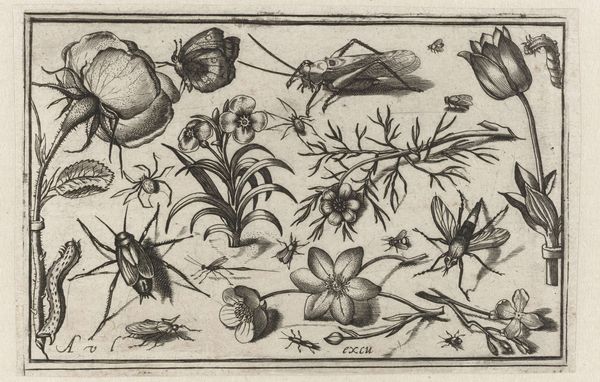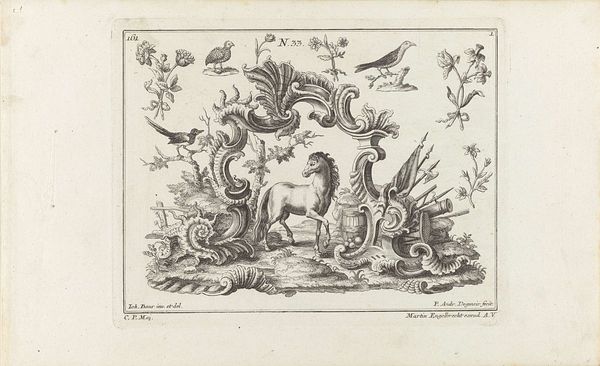
Wilde vijgenboom van het eiland Maio (Kaapverdische eilanden) en aloë's, 1596-1597 1597 - 1646
0:00
0:00
drawing, print, ink, engraving
#
drawing
#
toned paper
# print
#
pen illustration
#
pen sketch
#
landscape
#
personal sketchbook
#
ink
#
ink drawing experimentation
#
pen-ink sketch
#
pen work
#
sketchbook drawing
#
storyboard and sketchbook work
#
northern-renaissance
#
sketchbook art
#
engraving
Dimensions: height 145 mm, width 220 mm
Copyright: Rijks Museum: Open Domain
This etching, made around 1596 or 1597 by an anonymous artist, depicts a wild fig tree and aloes from the island of Maio in Cape Verde. It’s fascinating to consider this image within the context of the late 16th century, a time of burgeoning European exploration and colonialism. Cape Verde, strategically located off the coast of West Africa, served as a crucial hub for Portuguese trade, including the transatlantic slave trade. This image then, takes on a new meaning. It becomes a visual record produced for a European audience, documenting the flora of a distant land. The plants themselves might have held economic or medicinal interest, but what is represented and how, is influenced by the social and economic interests of the time. To understand this image fully, one might consult historical accounts of exploration, botanical texts, and studies of colonial trade routes. By situating the artwork within its historical context, we can begin to unpack the complex relationship between art, science, and empire.
Comments
No comments
Be the first to comment and join the conversation on the ultimate creative platform.
